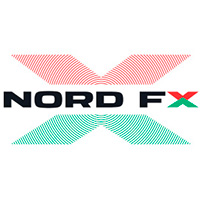They say every dog has its day. Well, there are currently not one but two puffed-up pooches in the digital spotlight, and neither one of them looks ready to step aside. Believe it or not, the entire crypto community has gone barking mad over these two tokens based on the same famously cute Japanese dog breed. Of course, we're talking about the prolific Dogecoin (DOGE) and Shiba Inu (SHIB), which have both seen spectacular growth in recent months. After much anticipation, Libertex has finally added CFD on this pair of pups to their list of tradable assets. All that's left for you to do now is decide which dog you want to back in this particular fight!
Many of you know that both Shiba Inu and Dogecoin started their lives with low expectations. One was launched as a deliberate joke and the other as a parody of that same joke. Now, their creators are still laughing…just all the way to the bank.
That's because these two canine capers have – against all odds – made it into the top 10 largest cryptocurrencies by market cap to join legacy contenders like Bitcoin (BTC), Ethereum (ETH) and Ripple (XRP). If the long-term performance of meme stocks like GameStop is anything to go by, these two coins could be a smart addition to your crypto portfolio. But before you can make your choice, you'll naturally need to see how these pups stack up next to each other.
Dogecoin: a technical overview
In many ways, Dogecoin works just like Bitcoin. Both networks are blockchain-based and verify transactions using proof of work consensus. That said, Dogecoin has some advantages of BTC for everyday payments since its transactions have faster processing times and lower costs than Bitcoin ones.
Dogecoin also has a much higher circulating supply than Bitcoin. DOGE's supply is theoretically limitless. With over 129 billion already in circulation, the supply is far more abundant than Bitcoin's 21 million capped maximum. Then, there's the issue of block rewards: 10,000 Dogecoin are mined every minute in the form of miner compensation.
As mentioned already, DOGE is a proof-of-work cryptocurrency, which means it shares many parallels with Bitcoin regarding how it uses computing power to secure its blockchain. What's more, DOGE is merge-mined with Litecoin. The upshot of this is that any miner of Litecoin or Dogecoin can choose to mine the other currency, stabilising its network power compared to solo-mined coins.
What about Shiba Inu?
The differences between these two pups start with the very system they operate, with Shiba Inu serving as a token on the Ethereum network. SHIB is what is known as a fungible token, which is assigned the ERC-20 protocol. Amid their widespread fame of late, many of you have undoubtedly heard of non-fungible tokens (NFTs), but these use the ERC-721 token standard.
The biggest advantage of being Ethereum-powered for Shiba Inu is multiplying smart contracts to generate its own decentralised financial products. DeFi has gained traction this year with tokens like yearn.finance, Uniswap and Aave, exploding in terms of price and adoption. Cryptocurrencies use smart contracts on Ethereum's blockchain to create decentralised exchanges (DEXs), lending protocols and even interest-bearing accounts. This could be a huge growth vector for SHIB going forward and certainly gives it an extra point for utility.
Shiba Inu has even made a foray into the NFT space with Shiboshis, a limited supply of 10,000 NFTs based on its Shiba Inu mascot. The decentralised programme leverages Ethereum's network to allow artists to auction off NFTs, supplanting the third party needed for transactions with smart contracts.
All about supply
Before looking at each coin's market performance and prospects, it would be remiss not to cover how SHIB and DOGE are issued and managed. After all, crypto coins and tokens are effectively currencies like the dollar or pound, and their supply (including its growth potential) is a huge factor determining yields on capital investment.
Let's start with the older of the two, Dogecoin, launched initially with a limited supply of 100 billion coins. By 2015, every last Dogecoin was mined, so the supply limit was changed so that a further 5 billion coins could be mined every year. Now, there's no established limit to how many Doge can be produced, meaning that DOGE is inherently inflationary. That said, as long as mining parameters remain unchanged, the inflation rate will decrease as a function of the extra coins in circulation.
Moving on to Shiba Inu, whose supply system is very different. Right from the outset, the total possible supply of SHIB was set at one quadrillion, after which 50% of the tokens were sent to crypto exchange Uniswap, with the other 50% given as a "gift/tribute" to Ethereum founder Vitalik Buterin. Interestingly enough, Vitalik opted to burn 90% of his SHIBA, donating the remaining tokens to the Indian Covid Relief Fund. SHIBA can't be mined to complicate matters further, and a portion of it is destroyed every time someone buys the token.
As such, SHIB differs from DOGE in being a deflationary currency, which should theoretically make it more likely to rise in value over time compared to its older rival. Remember that both of these coins have skyrocketed recently, and current valuations could thus be inflated.
What the charts say
As we've already touched upon, to say that these puppies have grown up incredibly quickly would be an understatement. SHIB, for instance, shot up by over 8,000% in the space of six months to reach $0.00008 in late October. Dogecoin, meanwhile, eclipsed even Shiba's impressive growth spurt, rising 12,000% from January to May 2021. Many astute investors would naturally expect a correction to ensue after such an incredible run. And that's what happened. Both coins are now down 50% and 65%, respectively, making them tempting buys just now. That's right, SHIB is currently hovering around $0.00004 per token, with DOGE available at a knockdown price of $0.38 at the time of writing. With both technical and fundamental factors suggesting a return to growth in the medium term, now could be a great time to add either one (or indeed both) to the portfolio.
Trading CFDs on SHIB and DOGE with Libertex
You guessed it, both these puppies are now available for trading on the award-winning Libertex trading platform, along with numerous other cryptocurrencies and digital assets. The only question that remains is which you think will prove the top dog? Truth be told, you shouldn't feel under pressure to pick a pup as both these assets could well have a place in a balanced and diversified investment portfolio. What's more, Libertex's new SHIB/DOGE CFD pair allows you to fight the competing dogs against each other. Choose your dog and Trade for More!
 Trump has declared that the United States could become the global capital of the crypto industry. To achieve this, he proposes reducing regulatory pressures.
Trump has declared that the United States could become the global capital of the crypto industry. To achieve this, he proposes reducing regulatory pressures. Forex trading is a captivating endeavor, promising both active and passive income streams. Yet, mastering forex is a continuous journey that transcends expertise levels, be it a novice or a seasoned trader...
Forex trading is a captivating endeavor, promising both active and passive income streams. Yet, mastering forex is a continuous journey that transcends expertise levels, be it a novice or a seasoned trader... In a resounding victory, NordFX, a prominent brokerage firm, has been crowned the "Best News & Analysis Provider" of 2023...
In a resounding victory, NordFX, a prominent brokerage firm, has been crowned the "Best News & Analysis Provider" of 2023... Errante, the premier online broker, is dedicated to delivering top-tier services and forging long-lasting, trust-based relationships with our clients. Our mission is to enhance your online trading journey...
Errante, the premier online broker, is dedicated to delivering top-tier services and forging long-lasting, trust-based relationships with our clients. Our mission is to enhance your online trading journey... Gold, a precious metal revered for its value for centuries, has found its place in the world of trading. Trading gold has become a popular way to invest in the commodity market...
Gold, a precious metal revered for its value for centuries, has found its place in the world of trading. Trading gold has become a popular way to invest in the commodity market...